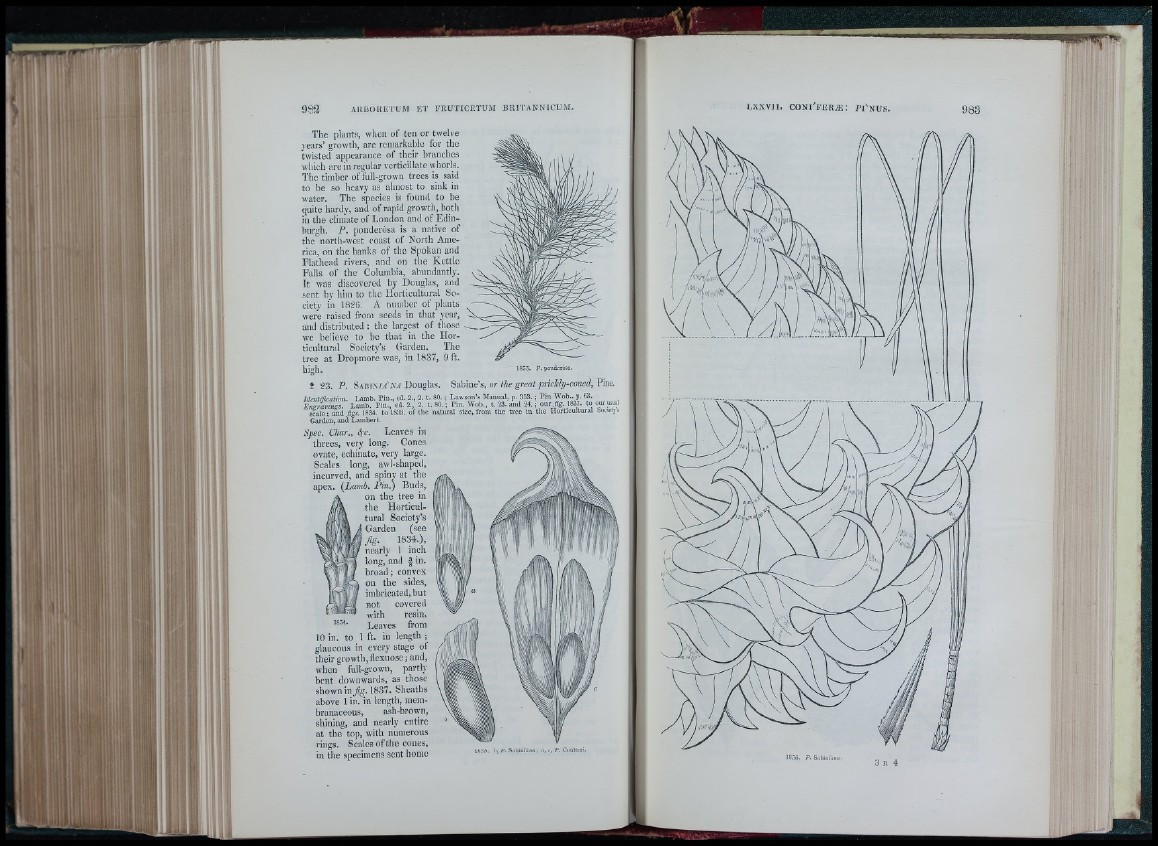
A R B O R E T U M E T F R U T IC E T U M B R IT A N N IC U M .
The plants, when of ten or twelve
years’ growth, are remarkable for the
twisted appearance of their branches
which are in regular verticillate whorls.
The timber of full-grown trees is said
to be so heavy as almost to sink in
water. The .species is found to be
quite hardy, and of rapid growth, both
in the climate of London and of Edinburgh.
P. ponderósa is a native of
the north-west coast of North America,
on the banks of the Spokan and
Flathead rivers, and on the Kettle
Falls of the Columbia, abundantly.
It was discovered by Douglas, and
sent by him to the Horticultural Society
in 1826. A number of plants
were raised from seeds in that year,
and distributed : the largest of those
we believe to be that in the Horticultural
Society’s Garden. The
tree at Dropmore was, in 1837, 9 ft.
high.
1 2 3 . P. S a b in m ' * Douglas.
1833. P . ponderosa.
Sabine’s, or the great prickly-coned, 1
Identification. Lamb. P in ., ed. 2-, 2. t. 80. ; Lawson’s Manual, p. 353. ; Pm Wob.. p. 63.
En-rav ings. Lamb. Pin., ed. 2., 2. t. 80.; P in. Wob., t. 23. and 24. ; our fig. 1837. to
scale; and figs. 1834. to 1838. of the natural size, from the tree in the Hort
Garden, and Lambert.
our usual
iorticultural Society’s
L X X V I I . c o m ' i ' E K M i p i ' n u s . 9 8 3